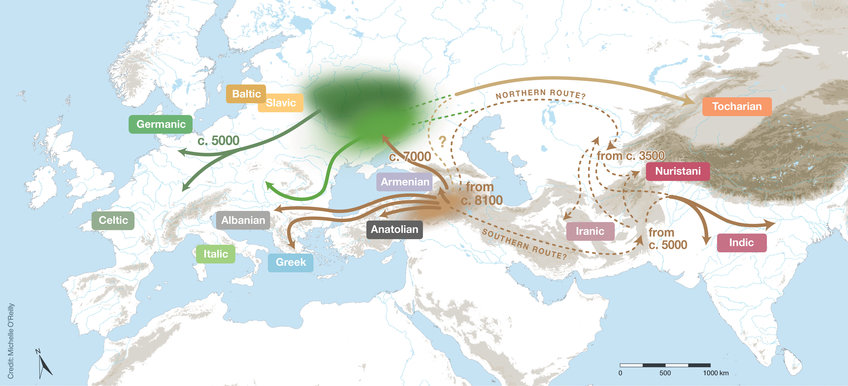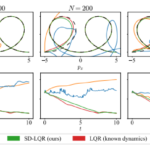2023-07-27 ノースカロライナ州立大学(NCState)
◆超伝導体は電気を抵抗なく伝える材料であり、エネルギーが熱として散逸しないため、より効率的なテクノロジーの実現に期待されています。しかし、磁場にさらされると超伝導特性を失う材料も多く、その応用範囲が限られていました。
◆今回の研究では、25テスラという極めて高い磁場にさらしてもKTaO3が超伝導を保持することを示し、この材料の応用開発に向けた重要な一歩となりました。また、研究者は2次元薄膜を作成する技術を使用して高品質な薄膜を成長させ、KTaO3の固有の特性を理解するための理想的なプラットフォームを提供しました。この研究は、KTaO3の超伝導特性や応用についての理解を深めるための貴重な知見を提供しています。
<関連情報>
- https://news.ncsu.edu/2023/07/potassium-tantalate-thin-films/
- https://pubs.acs.org/doi/full/10.1021/acs.nanolett.3c01571
- https://www.science.org/doi/10.1126/sciadv.adf1414
- https://pubs.aip.org/avs/jva/article-abstract/41/2/022703/2879278/Molecular-beam-epitaxy-of-KTaO3
酸化物界面における超伝導の臨界磁場が向上 Enhanced Critical Field of Superconductivity at an Oxide Interface
Athby H. Al-Tawhid, Samuel J. Poage, Salva Salmani-Rezaie, Antonio Gonzalez, Shalinee Chikara, David A. Muller, Divine P. Kumah, Maria N. Gastiasoro, José Lorenzana, and Kaveh Ahadi
Nano Letters Published:July 27, 2023
DOI:https://doi.org/10.1021/acs.nanolett.3c01571
Abstract

The nature of superconductivity and its interplay with strong spin–orbit coupling at the KTaO3(111) interfaces remain a subject of debate. To address this problem, we grew epitaxial LaMnO3/KTaO3(111) heterostructures. We show that superconductivity is robust against the in-plane magnetic field, with the critical field of superconductivity reaching ∼25 T in optimally doped heterostructures. The superconducting order parameter is highly sensitive to the carrier density. We argue that spin–orbit coupling drives the formation of anomalous quasiparticles with vanishing magnetic moment, providing significant condensate immunity against magnetic fields beyond the Pauli paramagnetic limit. These results offer design opportunities for superconductors with extreme resilience against the applied magnetic fields.
KTaO3(111)界面における異方的超伝導 Anisotropic superconductivity at KTaO3(111) interfaces
Ethan G. Arnault,Athby H. Al-Tawhid,Salva Salmani-Rezaie,David A. Muller,Divine P. Kumah,Mohammad S. Bahramy,Gleb Finkelstein,Kaveh Ahadi
Science Advances Published:15 Feb 2023
DOI:https://doi.org/10.1126/sciadv.adf1414

Abstract
A two-dimensional, anisotropic superconductivity was recently found at the KTaO3(111) interfaces. The nature of the anisotropic superconducting transition remains a subject of debate. To investigate the origins of the observed behavior, we grew epitaxial KTaO3(111)-based heterostructures. We show that the superconductivity is robust against the in-plane magnetic field and violates the Pauli limit. We also show that the Cooper pairs are more resilient when the bias is along [112¯¯¯<?XML:NAMESPACE PREFIX = “[default] http://www.w3.org/1998/Math/MathML” NS = “http://www.w3.org/1998/Math/MathML” />2¯] (I ∥ [112¯¯¯2¯]) and the magnetic field is along [11¯¯¯1¯0] (B ∥ [11¯¯¯1¯0]). We discuss the anisotropic nature of superconductivity in the context of electronic structure, orbital character, and spin texture at the KTaO3(111) interfaces. The results point to future opportunities to enhance superconducting transition temperatures and critical fields in crystalline, two-dimensional superconductors with strong spin-orbit coupling.
KTaO3の分子線エピタキシー Molecular beam epitaxy of KTaO3
Tobias Schwaigert,Salva Salmani-Rezaie,Matthew R. Barone,Hanjong Paik,Ethan Ray,Michael D. Williams,David A. Muller,Darrell G. Schlom,Kaveh Ahadi
Journal of Vacuum Science & Technology February 02 2023
DOI:https://doi.org/10.1116/6.0002223
Strain-engineering is a powerful means to tune the polar, structural, and electronic instabilities of incipient ferroelectrics. KTaO3 is near a polar instability and shows anisotropic superconductivity in electron-doped samples. Here, we demonstrate growth of high-quality KTaO3 thin films by molecular-beam epitaxy. Tantalum was provided by either a suboxide source emanating a TaO2 flux from Ta2O5 contained in a conventional effusion cell or an electron-beam-heated tantalum source. Excess potassium and a combination of ozone and oxygen (10% O3 + 90% O2) were simultaneously supplied with the TaO2 (or tantalum) molecular beams to grow the KTaO3 films. Laue fringes suggest that the films are smooth with an abrupt film/substrate interface. Cross-sectional scanning transmission electron microscopy does not show any extended defects and confirms that the films have an atomically abrupt interface with the substrate. Atomic force microscopy reveals atomic steps at the surface of the grown films. Reciprocal space mapping demonstrates that the films, when sufficiently thin, are coherently strained to the SrTiO3 (001) and GdScO3 (110) substrates.



